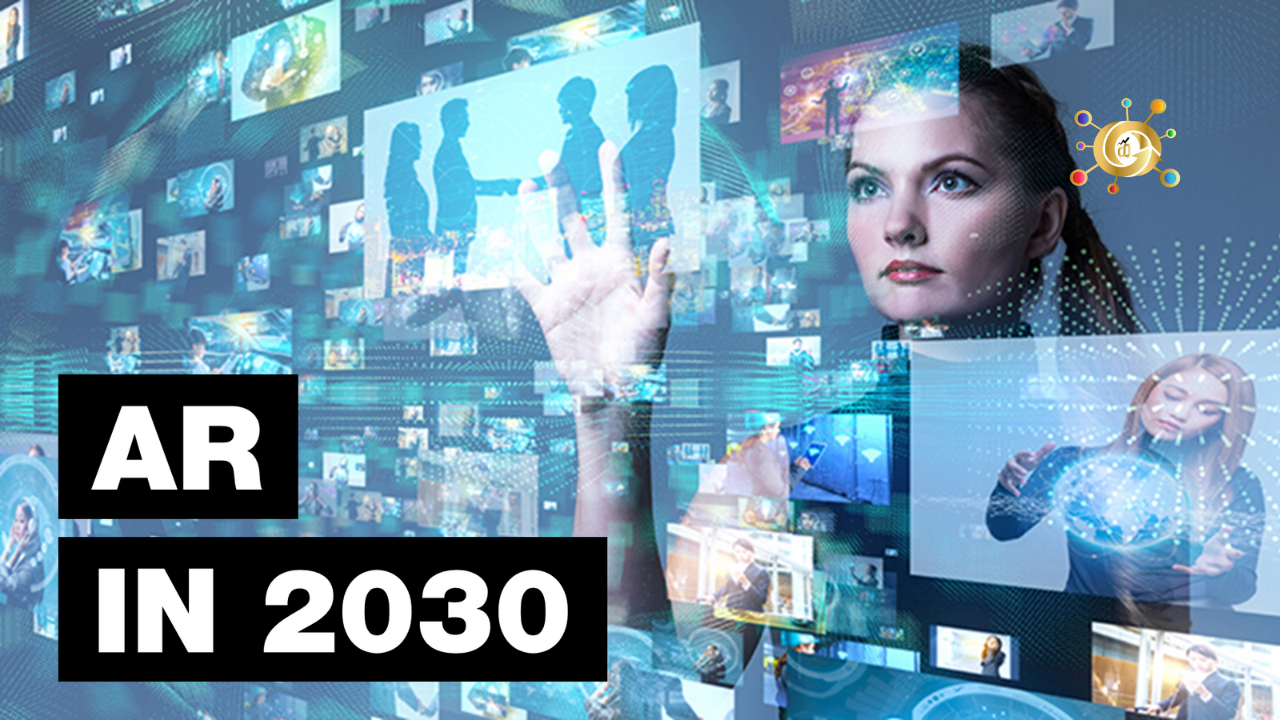Augmented Reality in 2030: Top 5 Future Technologies
In 2030, augmented reality is changing the world forever. For example:
-
AR Glasses Are Becoming Mainstream
AR glasses look identical to regular pairs of glasses, and people from all walks of life wear them in every major city.
You’re able to use your AR glasses to access applications pertaining to phone calls, emails, music, maps, and games. Some AR glasses are even starting to allow people to use hand gestures to control these apps.
Movies and video games appear on 2D screens that overlay your environment. Additionally, you can have video calls with people without picking up a smartphone. You can even use speech to display AI-generated images and videos using your AR lenses.
From the outside of the lenses, no one can tell which applications you have active. They’re fitted with Lidar sensors, enabling 3D interpretations of your environment.
AR contact lenses are growing in popularity and functionality as well. They’re expected to essentially replace AR glasses in the next 10 to 30 years.
-
AR-Generated Text Is Becoming Mainstream
AI assistants can generate text on your lenses to guide you through any situation.
Even better, whenever you speak with someone who’s speaking another language, your AR lenses will display translated text to you in real time. People who have hearing loss can have text automatically displayed for them as well when people are talking to them.
If you’re someone who gives presentations or you’re an actor or musician, you no longer have to memorize vast amounts of material. Using AR glasses, the words will appear on your lenses as you perform for an audience. This is also helpful during job interviews and dates when you want to say the precise phrases that will help you achieve your desired outcomes.
-
Shopping Is Becoming Enhanced By AR
When you walk through grocery stores and malls, your AR devices and apps will display product information, such as product prices, grams of protein, and sugar content. Soon, you could ask an AI assistant how to cook a specific meal, and it will direct you to all the food items that are part of its recipe.
Additionally, as you drive and walk down streets that support this technology, your AR devices will display the prices and amenities of any house or apartment for sale.
-
AR Is Enhancing The Education System
Students in middle and high schools are using 3D animated holograms to gain a better understanding of topics such as biology, anatomy, cosmology, geometry, and more. Because of the ability to rotate these holograms in any direction and change their sizes, students can understand these concepts from previously unattainable perspectives.
Students also run scientific and mathematical simulations in 3D space and can view the results from every conceivable angle. For example, students can see how medications affect various human body organs at cellular and molecular levels. They can adjust multiple physical conditions on virtual planets to see how those conditions affect their ability to support life
-
Outdoor & Indoor Navigation Is Being Augmented
When you’re walking or driving anywhere in the world, your glasses will tell you the estimated arrival time right in front of you and display a togglable mini-map on the corner of one lens.
If you’re a hiker or a camper, your AR glasses will display destinations in the form of symbols, along with the number of miles or kilometers they are from you. And when you look at the horizon, your AR lenses will show you where thunderstorms are approaching.
FAQs
What are the risks of chatbots?
What are the trends for chatbots in 2024?
Another important AI trend for 2023 is that chatbots are becoming a standard solution for businesses of all sizes. As the technology has matured, it’s become more accessible to smaller businesses and more accepted (and wanted!) by customers.
What are the future predictions of chatbots?
What is a Level 3 chatbot?
What is the future of AI 2024?

